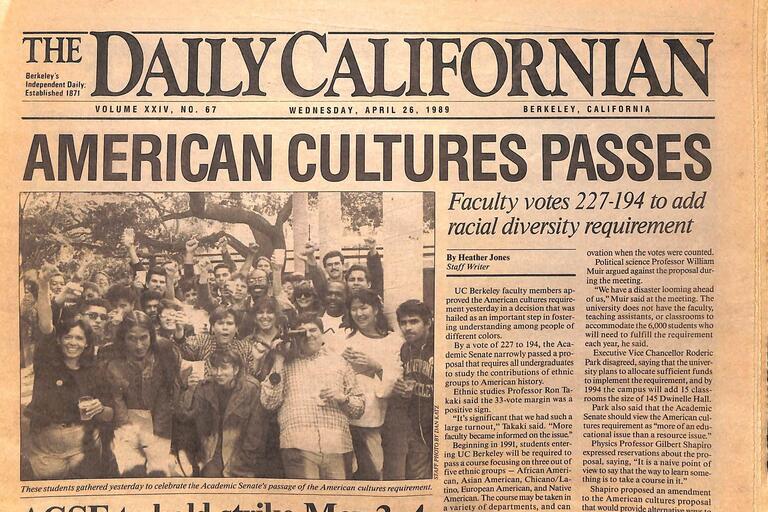Passed by the UC Berkeley Senate in 1989, the AC requirement was the first and only campus-wide graduation requirement for all undergraduate students. When the requirement was first created, there was not one course on campus that could meet the comparative parameters of the requirement. A massive feat, the curriculum had to be built within two years to ensure that incoming students in 1991 had the necessary courses to prepare for graduation, catalyzing the most dramatic ideological effort in the university’s history.
On a college campus renowned for its research excellence, the AC Summer seminars for UC Berkeley and community college faculty offered through the newly created and administratively supported ‘Center for the Teaching and Study of American Cultures’ were the first across-campus effort to bring faculty together to talk about teaching.
“The Chancellor gave us a room, a blue carpet, and a little furniture. Then we had to figure out how to make this thing (courses that would meet the AC Requirement) happen. In the first summer seminar, we had 30-odd faculty, tenured faculty, faculty who had (mostly, not all) been in the trenches fighting for AC. And faculty that we had never heard of before …. And we wondered why someone who researches Hegel is interested in this? Whilst I was worried about the seats needed for graduation, making sure that there wasn’t a bottleneck/float holding up graduation, the seminars for six weeks during the summer, two hours a day, were arguing about things such as ‘truth’. But it wasn’t just about seats – it was about departments. Remember that the faculty had required that students pass something that did not exist. There were no AC classes. No one knew how to do this thing. The senate had made up the requirement, codified it into regulation 300, and no one (except perhaps Ron Takaki) knew how to do it. And the fact is that our faculty here, they may be the world’s expert of whatever they are the expert on, but in this particular area, if they were interested in it at all, race was White and Black, at best. But everyone else hardly existed. And this requirement needed three, comparative, substantial, theoretical groups, at least. It was very clear what the rules were. No one knew anything about this. And that was the purpose of the seminars. For faculty who wanted to teach a course to learn the material, to learn from each other” - Ron Choy, Assistant Director of the AC Center, 1991-2004
Within two years, there were enough courses to meet the new AC requirement to ensure that each student would graduate on time. By 1994, when the first students were graduating who needed the AC requirement, there were at least 6,000 seats available annually, and UC Berkeley faculty had fundamentally changed the way that they taught.


